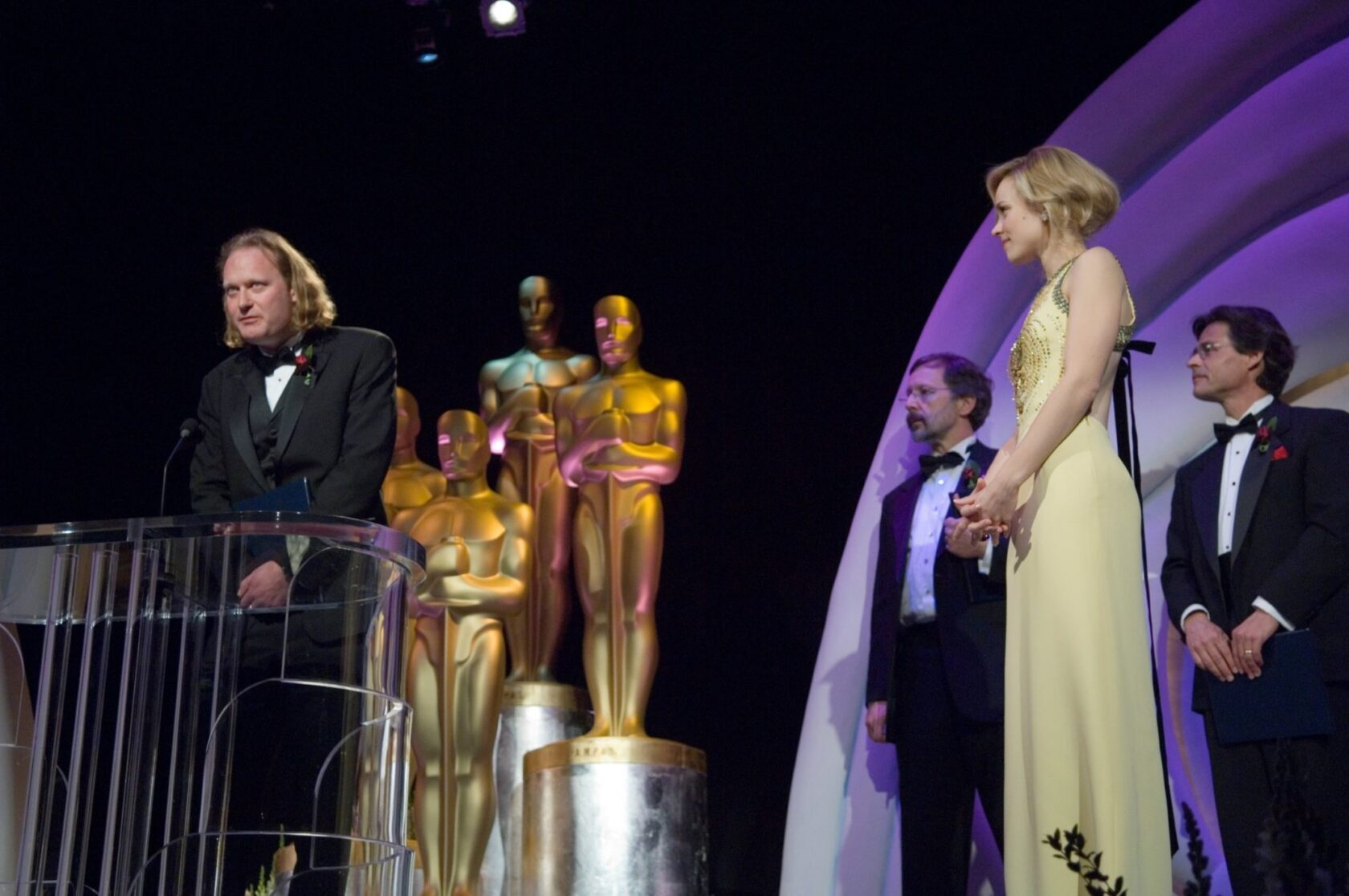For the previous 16 years, NVIDIA applied sciences have been working behind the scenes of each Academy Award-nominated movie for Greatest Visible Results.
This 12 months, three NVIDIA researchers — Essex Edwards, Fabrice Rousselle and Timo Aila — have been honored with Scientific and Technical Awards by the Academy of Movement Image Arts and Sciences for his or her groundbreaking contributions to the movie trade. Their improvements in simulation, denoising and rendering are serving to form the way forward for visible storytelling, empowering filmmakers to create much more breathtaking and immersive worlds.
Ziva VFX: Bringing Digital Characters to Life
Essex Edwards acquired a Technical Achievement Award, alongside James Jacobs, Jernej Barbic, Crawford Doran and Andrew van Straten, for his design and growth of Ziva VFX. This cutting-edge system permits artists to assemble and simulate human muscle groups, fats, fascia and pores and skin for digital characters with an intuitive, physics-based method.
Offering a sturdy solver and an artist-friendly interface, Ziva VFX remodeled the methods studios deliver photorealistic and animated characters to the large display and past.
Award-winning visuals impact and animation studio DNEG is continuous to develop Ziva VFX to additional improve its creature pipeline.
“Ziva VFX was the results of a group of artists and engineers coming collectively and making hundreds of actually good small design selections again and again for years,” stated Edwards.
Disney’s ML Denoiser: Revolutionizing Rendering
Fabrice Rousselle was honored with a Scientific and Engineering Award, alongside Thijs Vogels, David Adler, Gerhard Röthlin and Mark Meyer, for his work on Disney’s ML Denoiser. This superior machine studying denoiser launched a pioneering kernel-predicting convolutional community, making certain temporal stability in rendered photos for higher-quality graphics.
Initially developed to reinforce the standard of animated movies, this breakthrough know-how has since change into a vital instrument in live-action visible results and high-end rendering workflows. It helps take away noise, sharpens photos and hastens rendering, permitting artists to work sooner whereas reaching larger high quality.
Since 2018, Disney’s state-of-the-art denoiser powered by machine studying (ML) has been utilized in over 100 movies, together with “Toy Story 4,” “Ralph Breaks the Web,” and “Avengers: Endgame.”
The denoiser was developed by Disney Analysis, ILM, Pixar and Walt Disney Animation — the results of a large cross-studio effort serving to to push the boundaries of visible storytelling for studios throughout the trade.
On this excessive instance of 4 samples common per pixel, Disney’s ML Denoiser does a exceptional job. Inside Out 2 © Disney/Pixar
Making use of U-Nets to Denoising
Timo Aila acquired a Technical Achievement Award, alongside Attila T. Áfra, for his pioneering contributions to AI picture denoising. Aila led the early growth of the U-Internet structure, which has confirmed capable of take away noise whereas preserving effective particulars, and has change into a significant method throughout the movie trade. Áfra carried out it in Intel Open Picture Denoise, a well-liked open-source library for prime quality AI-driven denoising. U-Nets have change into an necessary know-how in different movie denoisers as nicely, together with the NVIDIA OptiX Denoiser.
“Path tracing has an inherent noise drawback, and within the early days of deep studying, we began searching for architectures that would assist,” Aila stated. “We turned to denoising autoencoders, and the pivotal second was after we launched skip connections. All the pieces started to work, from fixing JPEG compression artifacts to eliminating the form of Monte Carlo noise that happens in path-traced pc graphics. This breakthrough led to the manufacturing of cleaner, extra lifelike photos in rendering pipelines.”
Pushing the Boundaries of Visible Storytelling
With these newest honors, Edwards, Rousselle and Aila be part of the various NVIDIA researchers who’ve been acknowledged by the Academy for his or her pioneering contributions to filmmaking.

Over time, 14 further NVIDIA researchers have acquired Scientific and Technical Awards, reflecting NVIDIA’s important contributions to the artwork and science of movement photos by way of cutting-edge analysis in AI, simulation and real-time rendering.
This group consists of Christian Rouet, Runa Loeber and NVIDIA’s superior rendering group, Michael Kass, Jos Stam, Jonathan Cohen, Michael Kowalski, Matt Pharr, Joe Mancewicz, Ken Museth, Charles Loop, Ingo Wald, Dirk Van Gelder, Gilles Daviet, Luca Fascione and Christopher Jon Horvath.
The awards ceremony will happen on Tuesday, April 29, on the Academy Museum of Movement Photos in Los Angeles.
Be taught extra about NVIDIA Analysis, AI, simulation and rendering at NVIDIA GTC, a world AI convention happening March 17-21 on the San Jose Conference Middle and on-line. Register now to hitch a convention monitor devoted to media and leisure.
Foremost function courtesy of DNEG © 2024 Warner Bros. Ent. and Legendary. All Rights Reserved. GODZILLA TM & © Toho Co., Ltd.

